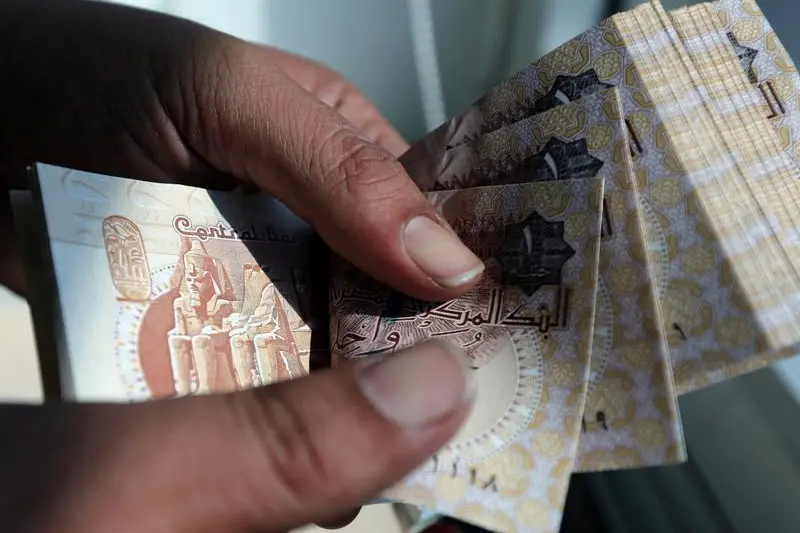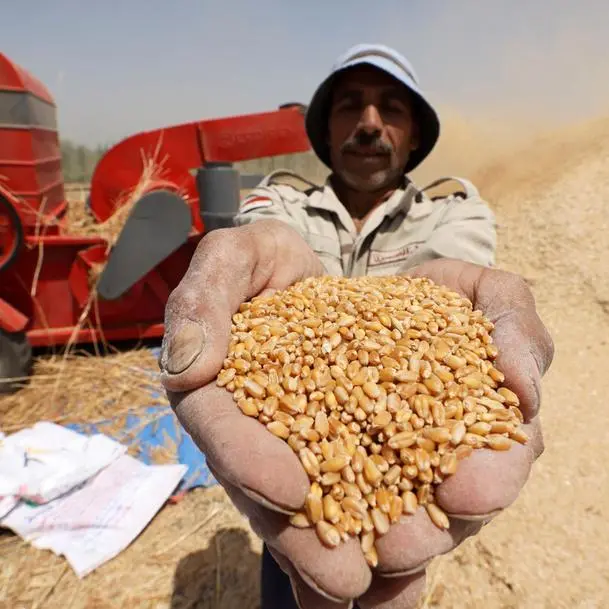PHOTO
Egypt’s external debt registered $160.6bn at the end of March 2024, a decrease of approximately $4.1bn, or 2.5%, compared to the end of June 2023. The decline was attributed to a $3.8bn decrease in net disbursements of loans and facilities, coupled with a $0.3bn decrease in book value due to the appreciation of the US dollar against other borrowing currencies.
At the end of March 2024, long-term external debt comprised $135.3bn, representing 84.2% of total external debt, a decrease of roughly $1.3 billion compared with the end of June 2023. Multilateral debt reached $50bn, down by $3bn from the end of June 2023.
Bonds and Sukuk issued abroad (non-resident holdings) reached $28.9bn, down by $0.6bn, following the repayment of two tranches. As of March 2024, the outstanding stock of bonds and Sukuk included approximately $21bn of Eurobonds issued in US dollars, the equivalent of approximately $4bn of Eurobonds denominated in euros, around $1.5bn of Sukuk issued in US dollars, the equivalent of approximately $892m of Samurai bonds issued in Japanese yen, about $725m of Green bonds issued in US dollars, the equivalent of $484.6m of PANDA bonds issued in Chinese yuan, and about $345m of sovereign notes issued in US dollars.
Rescheduled bilateral debt decreased by $0.3bn, totalling $0.7bn. Repurchase Agreements (Repo) slightly decreased to $4.5bn. Long-term deposits placed at the Central Bank of Egypt (CBE) by some Arab countries stood at $15bn, distributed as follows: $5.7bn by the United Arab Emirates, $5.3bn by Saudi Arabia, and $4bn by Kuwait. Non-guaranteed private sector debt reached $1.7bn, up by $144.7m. Buyers’ and suppliers’ credit reached about $20.4bn, up by $0.5bn. Other bilateral debt amounted to $14.1bn, an increase of $2.1bn compared to the end of June 2023.
Short-term external debt stock registered $25.3bn at the end of March 2024, down by about $2.8bn compared with the end of June 2023. Arab countries’ deposits at the CBE constituted approximately 43.9% ($ 11.1bn) of this stock. Notably, the period from January to March 2024 witnessed the conversion of the $5bn UAE deposit at the CBE towards the Ras El Hekma project.
At the end of March 2024, the US dollar was the primary borrowing currency, representing $108.3bn (67.4%) of total external debt, followed by the euro ($18.3bn). Other major currencies accounted for $34bn. This included SDRs ($19.1bn), the Chinese yuan ($4.6bn), the Kuwaiti dinar ($3.8bn), the Japanese yen ($3.3bn), and other currencies ($3.2bn).
Debt distribution by creditors indicated that $53bn was owed to multilateral institutions. The IMF loans alone represented 34.3% of such loans, equivalent to $18.2bn, which included: $8.1bn in Extended Fund Facility (EFF), $4.2bn in Stand-by Arrangement (SBA), $3.8bn representing SDR allocation, $1.7bn in Rapid Financing Instrument (RFI), and $0.4bn representing the first tranche of the New Extended Fund Facility. Other major multilateral creditors included the International Bank for Reconstruction and Development (IBRD) ($12.1bn or 22.8%), the African Export-Import Bank (Afreximbank) ($6.1bn or 11.5%), the European Investment Bank (EIB) ($4.7bn or 8.9%), and the African Development Bank (AfDB) ($2.7bn or 5.1%).
Additionally, $41.6bn was owed to Arab countries, mainly the UAE ($16.4bn or 10.2% of total external debt), Saudi Arabia ($12.6bn or 7.8%), Kuwait ($6.2bn or 3.9%), and Qatar ($4bn or 2.5%). Meanwhile, $12.5bn originated from six members of Paris Club countries, namely Russia ($3.4bn), Japan and France ($2.4bn each), Germany ($2.2bn), the USA ($1.5bn), and the UK ($0.6bn). In addition, $8.8bn was owed to China.
The structure of Egypt’s external debt by the debtor sector at the end of March 2024, compared with the end of June 2023, revealed that the Central Bank of Egypt’s external debt decreased by approximately $2.5bn to reach $41.1bn, representing 25.6% of external debt.
This decrease resulted from a decline in short-term currency and deposits by $1.9bn and long-term debt by $0.6bn. The government remained the main obligor, with a share of around 51.2% of external debt. Its debt decreased by about $1.2bn to reach $82.2bn.
The majority of this decrease was in long-term debt. Banks’ external debt decreased by approximately $0.9bn to $20.1bn, representing 12.5% of external debt. This was reflected in a decrease in short-term debt by $1.4 billion and an increase in long-term loans by $0.5bn. Other sectors’ debt increased by about $0.5bn to reach $17.2bn, representing 10.7% of external debt, mainly reflecting the rise in short-term trade credits.
Debt service increased to record $23.8bn during July to March 2023-2024, compared to $17.8bn in July to March 2022-2023, as both principal and interest payments rose by $3.9bn and $2.1bn, respectively.
External debt stock to GDP represented 39.8% at the end of March 2024, compared to 40.5% at the end of June 2023. Short-term external debt by original maturity to total external debt registered 15.8% at the end of March 2024 (against 17.1% at the end of June 2023).
The decline in short-term external debt relative to the increase in net international reserves (NIR) brought down this ratio to 62.8% at the end of March 2024, from 80.8% at the end of June 2023. Short-term external debt by residual maturity to total external debt registered 33.8% at the end of March 2024 (against 30.0% at the end of June 2023).
Its ratio to net international reserves (NIR) decreased to 134.5% at the end of March 2024 (against 142.0% at the end of June 2023) as the increase in NIR surpassed the rise in residual short-term debt.
External debt stock to exports of goods and services registered 244.5% at the end of March 2024 (against 222% at the end of June 2023). Debt-service ratio (annually) increased to 47.9% at the end of March 2024 compared to 32.2% at the end of March 2023. Also, the debt-service ratio to current receipts increased to 36.0% compared to 23.5% at the end of March 2023.
© 2024 Daily News Egypt. Provided by SyndiGate Media Inc. (Syndigate.info).























